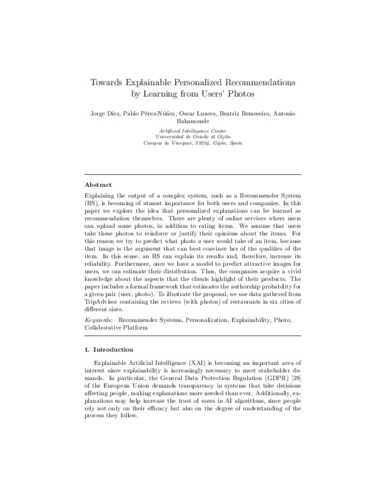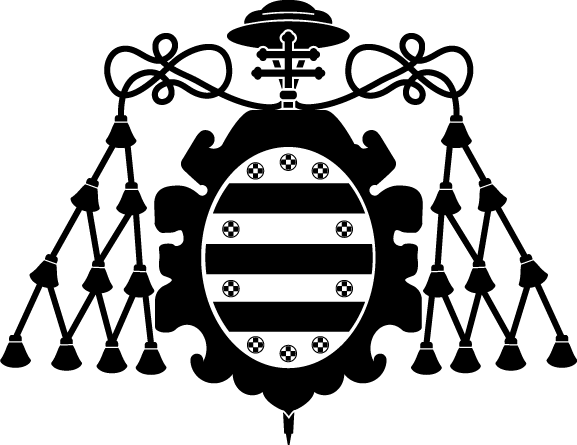Towards Explainable Personalized Recommendations by Learning from Users’ Photos
Autor(es) y otros:
Palabra(s) clave:
Artificial Intelligence
Fecha de publicación:
Editorial:
Elsevier
Versión del editor:
Citación:
Descripción física:
Resumen:
Explaining the output of a complex system, such as a Recommender System (RS), is becoming of utmost importance for both users and companies. In this paper we explore the idea that personalized explanations can be learned as recommendation themselves. There are plenty of online services where users can upload some photos, in addition to rating items. We assume that users take these photos to reinforce or justify their opinions about the items. For this reason we try to predict what photo a user would take of an item, because that image is the argument that can best convince her of the qualities of the item. In this sense, an RS can explain its results and, therefore, increase its reliability. Furthermore, once we have a model to predict attractive images for users, we can estimate their distribution. Thus, the companies acquire a vivid knowledge about the aspects that the clients highlight of their products. The paper includes a formal framework that estimates the authorship probability for a given pair (user, photo). To illustrate the proposal, we use data gathered from TripAdvisor containing the reviews (with photos) of restaurants in six cities of different sizes.
Explaining the output of a complex system, such as a Recommender System (RS), is becoming of utmost importance for both users and companies. In this paper we explore the idea that personalized explanations can be learned as recommendation themselves. There are plenty of online services where users can upload some photos, in addition to rating items. We assume that users take these photos to reinforce or justify their opinions about the items. For this reason we try to predict what photo a user would take of an item, because that image is the argument that can best convince her of the qualities of the item. In this sense, an RS can explain its results and, therefore, increase its reliability. Furthermore, once we have a model to predict attractive images for users, we can estimate their distribution. Thus, the companies acquire a vivid knowledge about the aspects that the clients highlight of their products. The paper includes a formal framework that estimates the authorship probability for a given pair (user, photo). To illustrate the proposal, we use data gathered from TripAdvisor containing the reviews (with photos) of restaurants in six cities of different sizes.
Patrocinado por:
This work was funded under grants TIN2015-65069-C2-2-R from the Spanish Ministry of the Economy and Competitiveness, and IDI-2018-000176 from the Principado de Asturias Regional Government, partially supported with ERDF funds. We are grateful to NVIDIA Corporation for the donation of the Titan Xp GPU used in this research.
Colecciones
- Artículos [37532]
- Informática [872]
- Investigaciones y Documentos OpenAIRE [8365]
Ficheros en el ítem





